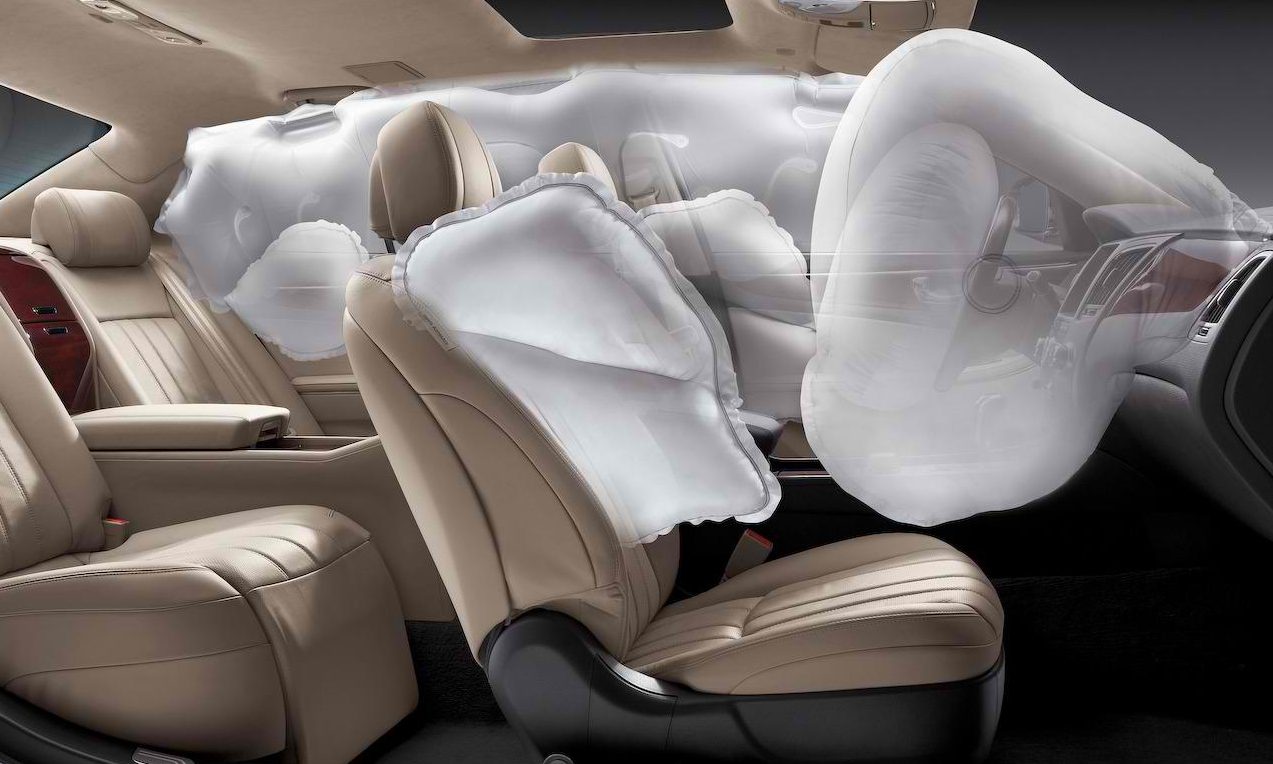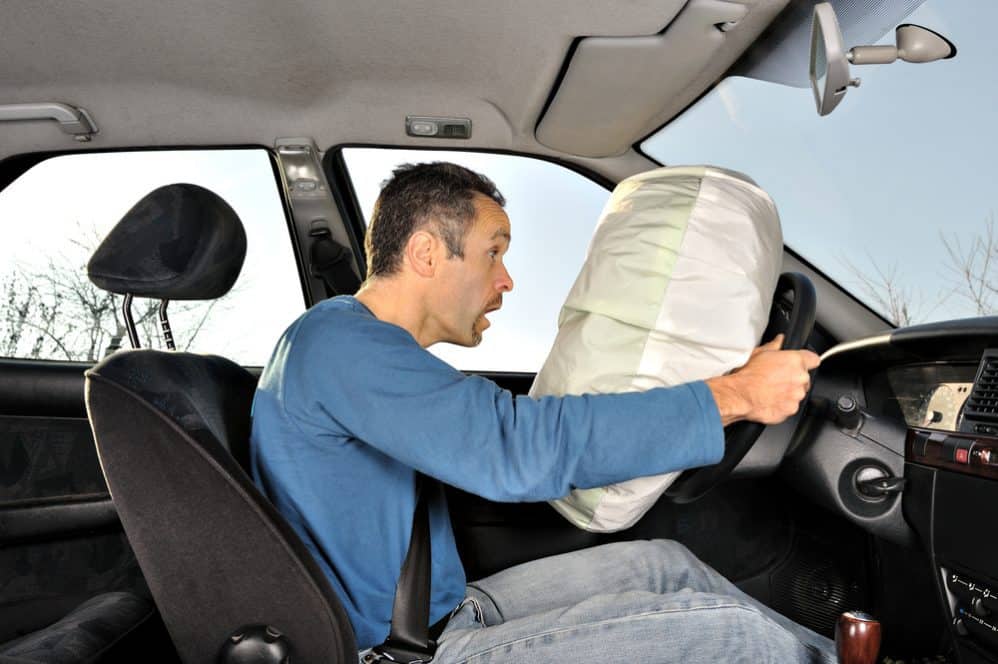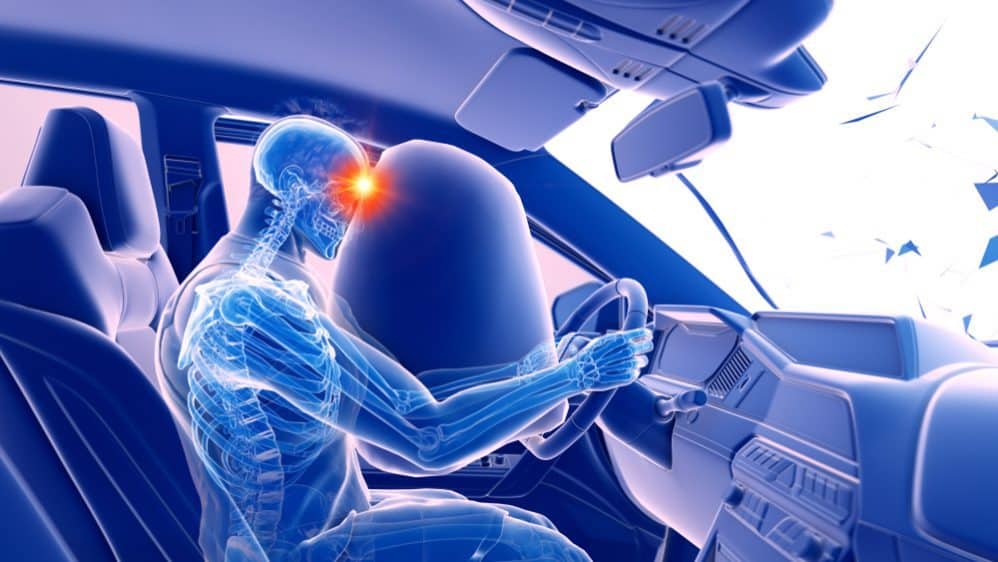As of December 1999, more than 95 million, or 47 percent of all cars and light trucks on Americas’ roads have driver-side air bags. Almost 68 million of these also have passenger-side air bags.
As of December 1998, air bags inflated in more than 3.3 million vehicles in crashes. (Insurance Institute for Highway Safety, or IIHS) The combination lap/shoulder safety belts and air bags is the most effective safety system available for occupants of passenger vehicles, and it is 75 percent effective in preventing serious head injuries and 66 percent effective in preventing serious chest injuries. (National Highway Traffic Safety Administration or NHTSA)
According to the National Highway Traffic Safety Administration, an estimated 4,758 people are alive today because of their air bags.
Air Bag Facts
- Air bags are safety devices designed to deploy in frontal but not other types of crashes. Most air bags will deploy only in a moderate-to-severe frontal crash.
- All new passenger cars were required to have driver and passenger air bags beginning with the 1998 model year. All new light trucks, including vans and sport utility vehicles, had the same requirement as of the 1999 model year.
- When all passenger vehicles are equipped with air bags, it is expected that more than 3,000 lives will be saved each year. (NHTSA)
- Driver air bags reduce deaths in frontal crashes by 26 percent for drivers wearing safety belts and 32 percent for unbelted drivers. Passenger air bags reduce deaths in frontal crashes by 14 percent for passengers wearing safety belts and 23 percent for unbelted passengers. (NHTSA)
- Occupants who are positioned too close to an air bag when it begins to deploy are at risk of serious injury. Since 1990, 149 deaths have been attributed to air bags deploying in low-speed crashes. (NHTSA) The deaths have included 68 children between ages 1 and 11, and 18 infants. (NHTSA) Of the 68 children killed, 54 are believed to have been unbuckled. (IIHS)
- Most air bag deaths have occurred when adults or children are not properly using safety belts or correctly placed in a child safety seat. Others are at risk due to positioning – such as drivers who are less than ten inches from the steering wheel and infants who are placed in rear-facing child safety seats near a passenger air bag. (NHTSA)
Air Bag Safety Tips
- Rear-facing child safety seats should NEVER be placed in the front seat of vehicles with passenger air bags. The impact of a deploying air bag on a rear-facing child safety seat can result in death or serious injury to the child. (NHTSA and IIHS)
- The safest place for children under age 13 is in the back seat, properly restrained, and away from the force of a deploying air bag. (NHTSA and IIHS)
- If children must sit in front, make sure the vehicle seat is all the way back and that the child is securely buckled and sitting back in the seat at all times. (NHTSA and IIHS)
- Air bags may also pose a risk to small-statured adults who feel they must sit too close to the steering wheel. Even when properly belted, drivers positioned too close to the steering wheel are at risk of serious injury from a deploying air bag. They can reduce or eliminate that risk by sitting back at least 10 inches from the steering wheel. (NHTSA and IIHS)
- NHTSA has procedures in place to allow those who are at risk of injury from an air bag to obtain on/off switches for the air bag. Only a small percentage of people those who cannot avoid being seated too close to an air bag should obtain an on/off switch. Before obtaining an on/off switch, small-statured drivers should consider installing pedal extenders in their automobile or look into newly manufactured automobiles that have pedal adjusters included as standard equipment.
Improved Air Bag Safety
- On September 18, 1998, NHTSA proposed new rules to improve air bag safety by requiring the introduction of advanced air bags over the next several years.
- These advanced air bag systems will increase air bag effectiveness and safety by reducing the risk of harm to out-of-position vehicle occupants from air bag deployment.
- The new air bag technology reduces air bag risks by adjusting or suppressing air bag deployment in instances in which an occupant would otherwise be at risk.
- Advanced air bags will enhance occupant protection and air bag safety but will not eliminate all risks. To make air bags as safe as possible, we also must increase safety belt and child safety seat use.
“Saved by the Air Bag” Success Stories
- In 1989, Advocates for Highway and Auto Safety formed a “Saved By the Air Bag” group to help promote the lifesaving benefits of air bags and safety belts.
- To date, the data base includes the stories of more than 200 people who credit an air bag with preventing serious injury or death.
- Sample profiles can be found on the Advocates Web page at http://www.saferoads.org/




It was interesting to me that you mentioned how air bags reduce deaths in frontal crashes by twenty six percent. My mother recently bought an older vehicle, and is interested in pursuing getting proper safety included. I’ll be certain to give your article to her to determine what steps to take!